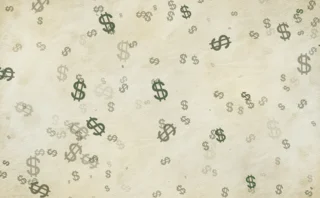
Credit evolution

Global banks and securities dealers have written down more than $180 billion of direct exposures to subprime debt and collateralised debt obligations (CDOs). And a number of major banks reporting their results in February say they've put the matter behind them. But they say so with a caveat - and it's a big one - that this assumes matters won't deteriorate further.
It looks like reverberations of the subprime debacle, along with associated funding issues and the crunch in broader credit markets, are far from over. And some of the squeeze seen in Europe and the US is now being felt more keenly in Asia. Melbourne-based ANZ Bank chief executive Mike Smith says the dislocation in the region is still "understated" and overseas credit markets are "the toughest in 50 years".
The frantic efforts of financial institutions worried about their own exposures, combined with seeming political pressure on Moody's Investors Service and Standard & Poor's to maintain their AAA ratings on the world's two biggest monoline insurers, Ambac and MBIA, demonstrates the level of concern about further credit contagion.
Our cover story assesses some of the challenges faced by the rating agencies and monolines, along with the implications of monoline downgrades on financial institutions in Asia. While Ambac and MBIA had retained their AAA ratings from the two major rating agencies as of press time, Fitch had downgraded Ambac to AA. Fitch has arguably been the most active of the agencies in reviewing its policies and taking rating action. As our article on page 18 says, the agency is considering altering its ratings on corporate CDOs. This could spark more writedowns, although it appears the impact would be less acute in Asia than elsewhere.
Indeed, local banks have started to use the credit crunch to their advantage. For example, there is evidence that some large regional banks are squeezing rivals that have over-relied on the capital markets for funding. Among those that spring to mind are Australian banks and troubled mortgage lender Rams Home Loan Group.
Cash-rich Asian banks are also being asked to help bail out some of the financial institutions and special investment vehicles (SIVs) facing acute problems outside the region. So far, they have resisted investing in the proposed super-SIV and monoline insurers, but they have bought chunks of some of their weakened Western counterparts, which may represent good value. Local banks are also funding leveraged buyouts, where cash-strapped international banks appear uninterested in deals over $1 billion. There should also be some opportunities in using their local knowledge to pick up distressed credit assets that the market may be currently undervaluing.
By Christopher Jeffery.
Only users who have a paid subscription or are part of a corporate subscription are able to print or copy content.
To access these options, along with all other subscription benefits, please contact info@risk.net or view our subscription options here: http://subscriptions.risk.net/subscribe
You are currently unable to print this content. Please contact info@risk.net to find out more.
You are currently unable to copy this content. Please contact info@risk.net to find out more.
Copyright Infopro Digital Limited. All rights reserved.
You may share this content using our article tools. Printing this content is for the sole use of the Authorised User (named subscriber), as outlined in our terms and conditions - https://www.infopro-insight.com/terms-conditions/insight-subscriptions/
If you would like to purchase additional rights please email info@risk.net
Copyright Infopro Digital Limited. All rights reserved.
You may share this content using our article tools. Copying this content is for the sole use of the Authorised User (named subscriber), as outlined in our terms and conditions - https://www.infopro-insight.com/terms-conditions/insight-subscriptions/
If you would like to purchase additional rights please email info@risk.net
More on Credit risk
Finding the investment management ‘one analytics view’
This paper outlines the benefits accruing to buy-side practitioners on the back of generating a single analytics view of their risk and performance metrics across funds, regions and asset classes
Revolutionising liquidity management: harnessing operational intelligence for real‑time insights and risk mitigation
Pierre Gaudin, head of business development at ActiveViam, explains the importance of fast, in-memory data analysis functions in allowing firms to consistently provide senior decision-makers with actionable insights
Sec-lending haircuts and indemnification pricing
A pricing method for borrowed securities that includes haircut and indemnification is introduced
XVAs and counterparty credit risk for energy markets: addressing the challenges and unravelling complexity
In this webinar, a panel of quantitative researchers and risk practitioners from banks, energy firms and a software vendor discuss practical challenges in the modelling and risk management of XVAs and CCR in the energy markets, and how to overcome them.
Credit risk & modelling – Special report 2021
This Risk special report provides an insight on the challenges facing banks in measuring and mitigating credit risk in the current environment, and the strategies they are deploying to adapt to a more stringent regulatory approach.
The wild world of credit models
The Covid-19 pandemic has induced a kind of schizophrenia in loan-loss models. When the pandemic hit, banks overprovisioned for credit losses on the assumption that the economy would head south. But when government stimulus packages put wads of cash in…
Driving greater value in credit risk and modelling
A forum of industry leaders discusses the challenges facing banks in measuring and mitigating credit risk in the current environment, and strategies to adapt to a more stringent regulatory framework in the future
Accelerating the evolution of credit decisioning and modelling
Anthony Mancuso, director, global head of risk modelling and decisioning at SAS, explains the importance of developing a fully capable credit modelling lifecycle to empower non-specialist personnel, and offers insight into its own solutions to this end,…
Most read
- Top 10 operational risks for 2024
- Japanese megabanks shun internal models as FRTB bites
- Top 10 op risks: third parties stoke cyber risk







